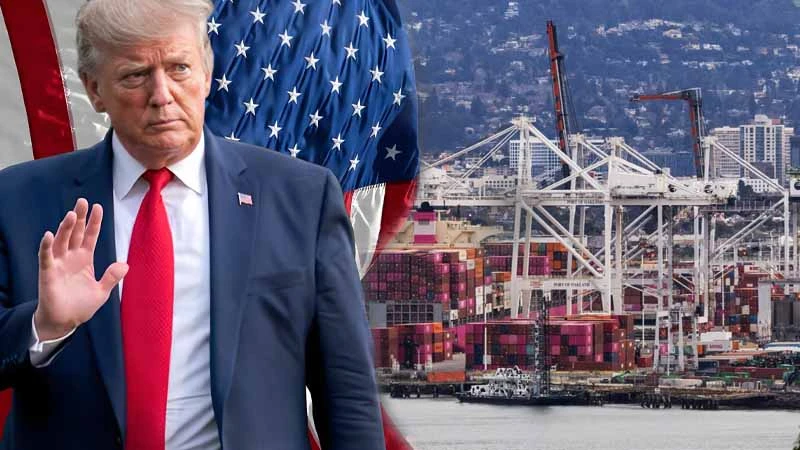The Impact of Post-Brexit Pound Exchange Rate Fluctuations on Investors: A Dual Perspective of Risks and Opportunities
The 2016 Brexit referendum shattered the pound’s “safe-haven currency” aura with an 11% single-day plunge, forcing exchange rate pricing models to permanently incorporate political fault-line risk factors. Eight years later, from the deadlock over Northern Ireland trade barriers to the currency-debt double blow triggered by the Truss government’s aggressive fiscal policies, the pound continues to demonstrate how geopolitics have “emerging-marketized” a G10 currency—its volatility midpoint has risen 83% compared to pre-referendum levels, and its sensitivity to central bank statements and trade agreements now surpasses that to GDP data. This article deconstructs the driving mechanisms, verifies cross-market transmission, and conducts scenario simulations to extract practical strategies for investors in an era of high volatility.
How the Brexit Process Reshaped the Pound’s Exchange Rate Landscape
Since the 2016 referendum, Brexit has remained the core variable driving the pound’s trajectory. This “dual shock” of politics and economics has not only altered the trade framework between the UK and the EU but has also directly impacted global investors’ asset allocation logic through exchange rate volatility. From the more than 10% single-day plunge on the day of the referendum to repeated lows under the risk of a “No-deal Brexit“, the pound has shifted from being a stable currency to a “politically sensitive asset”.
Referendum Shockwave — Lessons from a Historic Single-Day Depreciation
On June 24, 2016, the day the referendum results were announced, the pound plunged from 1.50 to 1.32 against the US dollar, marking a record single-day drop. This event highlighted the devastating impact of a “political black swan” on exchange rates and signaled a shift in the pound’s pricing logic from being “driven by economic fundamentals” to being “dominated by political risk premiums”.
Agreement Tug-of-War — Uncertainty Becomes a Normalized Risk
In 2019, the Brexit deal proposed by Theresa May’s government was rejected by Parliament, causing the pound to fall below 1.20 against the US dollar multiple times under the shadow of a “Hard Brexit“. This phase demonstrated that the combined effect of deadlocked Brexit negotiations and domestic political divisions was enough to keep the exchange rate under prolonged pressure.
Post-Brexit Era — Continued Brewing of Structural Weakness
Even after the legal completion of Brexit, the pound remains constrained by disputes over trade agreement details (such as the Northern Ireland border issue) and the costs of supply chain restructuring. The Bank of England has warned that if regulatory gaps with the EU cannot be effectively bridged, the exchange rate may face “chronic depreciation pressure”.
Multi-Dimensional Analysis of Factors Driving Pound Exchange Rate Volatility
The pound has entered a “high-volatility norm” in the post-Brexit period, and its pricing model now needs to incorporate non-traditional variables such as political maneuvering, shifts in monetary policy, and global market linkages. Investors must look beyond the surface to clarify the pathways and changing weights of these factors.
The Expanding Pricing Power of Political Uncertainty
Each turning point in the Brexit process (such as cabinet reshuffles, parliamentary rejections, and deadlocks in EU negotiations) has triggered sharp exchange rate fluctuations. Empirical evidence shows that the proportion of political risk premiums in the causes of pound volatility jumped from 15% before the referendum to 45%. This has given the pound “emerging market currency” characteristics, where sensitivity to news outweighs that to economic data.
The Two-Way Pull Effect of Monetary Policy
To offset the impact of Brexit, the Bank of England restarted quantitative easing in 2020, putting downward pressure on the pound; however, with inflationary pressures rising, rate hike expectations after 2024 provided support for the pound. This “policy pendulum” has significantly strengthened the linkage between the exchange rate and the interest rate market.
The Long-Term Costs of Trade Structure Restructuring
After Brexit, the average tariff cost on UK goods exports to the EU increased by 6%, forcing companies to shift supply chains, while foreign direct investment (FDI) inflows dropped 34% compared to pre-referendum levels. This structural damage continues to weaken the purchasing power parity foundation of the pound.
The Penetrating Impact of Pound Exchange Rate Volatility on Investment Markets
Investors need to reassess the transmission pathways among the stock, bond, and currency markets and remain alert to the “exchange rate-inflation-interest rate” spiral effect.
Speculative Opportunities and Traps in the Foreign Exchange Market
The pound’s implied volatility (IV) often surged above 20% before key Brexit votes, creating short-term arbitrage opportunities. However, the intensified two-way fluctuations of the RMB against the pound (such as the exchange rate revaluation following China’s foreign exchange deposit reserve ratio adjustment in 2024) also increased the risk of foreign exchange losses for cross-border capital.
Intensified Sector Divergence in the Stock Market
Within the Financial Times Stock Exchange 100 constituents, valuations of the automotive and pharmaceutical sectors, which rely heavily on the European Union single market, were revised down by 15%-20%, while mining and energy stocks with high US dollar revenue exposure benefited from the pound’s depreciation. This requires investors to finely adjust sector exposure ratios.
Repricing Challenges in the Fixed Income Market
UK government bond yields are significantly affected by the “exchange rate-inflation” transmission path. For instance, pound depreciation pushes up import prices, forcing the central bank to raise interest rates, which in turn depresses long-term bond prices. In addition, the risk of a mortgage rate spike (such as a potential 200-basis-point surge in a no-deal Brexit scenario) further pressures assets such as real estate investment trusts (REITs).
Risk Mitigation and Opportunity Capture Strategies for Investors
In the high-volatility environment of the pound, passive defense is no longer sufficient; active management must integrate three dimensions: scenario analysis, tool innovation, and regional diversification.
Dynamic Use of Hedging Tool Combinations
In addition to traditional forex forward contracts, investors can utilize “volatility index options” (such as betting on the GBP/USD volatility term structure) or hedge specific country exposure through “dual-currency ETFs”. Attention must be paid to the margin call risks of derivative products.
Cross-Market Asset Rebalancing
Increase safe-haven currency assets such as the US dollar and Japanese yen to 25%-30% of the portfolio, and allocate to UK export-oriented companies benefiting from pound depreciation (such as luxury goods group Burberry). At the same time, seize low exchange rate levels to position in UK real estate and higher education bonds (as tuition costs are effectively reduced by 22% due to pound depreciation).
Anticipation and Interpretation of Policy Signals
Closely monitor the Bank of England “forward guidance” and progress in EU negotiations. For instance, adjustments to the implementation details of the “Northern Ireland Protocol” may trigger a 3%-5% swing in the pound. In addition, subsidy policies by the UK Treasury for key industries (such as fintech) may create structural investment opportunities.
Key Scenario Projections for the Pound’s Exchange Rate over the Next Five Years
Looking ahead to the post-Brexit era, the pound will seek a new balance amid the tug-of-war between “regionalization” and “globalization“. Investors need to prepare multiple scenario-based response plans and dynamically adjust their risk appetite.
Base Case Scenario: Range-Bound Fluctuation under Mild Depreciation
If the UK can maintain a zero-tariff arrangement with the EU and sign new trade agreements such as the CPTPP, the pound against the US dollar may fluctuate within the 1.25-1.40 range, with annualized volatility remaining at 12%-15%.
Upside Risk: Policy Ownership Dividend Realisation
If the UK successfully builds a “Singapore-style” low-tax financial hub and attracts regional headquarters of multinational corporations, the pound may strengthen temporarily to 1.45 against the US dollar due to capital inflows.
Downside Risk: Geoeconomic Decoupling Crisis
If the UK-US free trade agreement collapses and disputes over industry subsidies such as fishing rights erupt with the EU, the pound may fall to 1.15 against the US dollar, triggering a sovereign rating downgrade and capital flight.
Conclusion: Building a Resilient Investment Framework Amid Volatility
Brexit has pushed the pound into a new normal of “uncertainty pricing”, requiring investors to move beyond traditional exchange rate analysis frameworks and incorporate political cycles, regulatory dynamics, and global liquidity shifts into their decision-making models. Only through dynamic risk hedging, cross-market opportunity capture, and scenario-based stress testing can investors turn crises amid the pound’s sharp volatility into a source of excess returns.
Frequently Asked Questions
Q1. Why Did the UK Choose to Leave the EU?
The main reasons for Brexit can be analyzed from the following four aspects:
- Economic Burden and Benefit Distribution Conflicts: The UK had to pay a high annual membership fee to the EU (around GBP 8 billion) and share subsidies for less-developed EU countries, while believing that its economic returns were limited. For example, its influence in EU decision-making was lower than that of core countries such as France and Germany. The UK’s competitive industries (such as financial services) sought to break free from the restrictions of the EU single market to gain greater flexibility in leading global trade negotiations.
- Demands for Sovereignty and Policy Autonomy: The UK had long been dissatisfied with EU laws overriding domestic legislation, believing that leaving the EU would allow it to regain control over key areas such as immigration policy and financial regulation, reducing interference from EU bureaucracy.
- Immigration and Social Pressure: The EU’s “free movement of people” policy led to a large influx of Eastern European immigrants into the UK, increasing strain on public resources such as housing and healthcare. Public resentment over immigration became a key driver of the Brexit referendum.
- Political History and Internal EU Conflicts: Since World War II, the UK has maintained a “semi-detached” relationship with continental Europe. Its traditional “balance of power” mindset conflicted fundamentally with the EU’s goal of integration. During the European debt crisis, the UK refused to participate in eurozone bailout programs, deepening disagreements with countries such as France and Germany and further fueling its Brexit ambitions.
Q2. What Are the Pros and Cons of Brexit for the UK?
Pros:
- Enhanced Economic and Fiscal Autonomy: Saving the annual membership fee paid to the EU and gaining the ability to independently negotiate trade agreements (such as signing new deals with the US and Asian countries). Small and medium-sized enterprises can avoid the EU’s cumbersome regulations, reducing compliance costs.
- Stronger Immigration and Sovereignty Control: Implementation of a “points-based immigration system” prioritizes high-skilled talent, alleviating the impact of low-skilled labor on the local job market.
Cons:
- Short-Term Economic Impact and Rising Trade Costs: London’s status as a financial hub has been undermined, with some financial institutions relocating operations to Frankfurt or Paris. Trade with the EU now requires tariffs and border checks, increasing supply chain costs for companies. Estimates suggest Brexit has reduced the UK’s annual GDP growth rate by around 1.5%.
- Weakened International Influence: Without EU membership, the UK’s voice in global issues such as climate negotiations and digital taxes has diminished, making it more reliant on its “special relationship” with the US.
- Domestic Division Risks: Northern Ireland and Scotland favor remaining in the EU, and Brexit has intensified the UK’s constitutional crisis, increasing the likelihood of a Scottish independence referendum.
Related articles
-
Since 2025, global financial markets have continued to focus on the monetary policy trends of the US Federal Reserve (Fed) and movements in the US Dollar Index. As a barometer of the international market, the performance of the US Dollar Index (DXY) directly affects asset prices and capital flows in...2025 年 3 月 18 日
-
2024 Q4 US Nasdaq Index plunged 3.6%, while the Hang Seng Tech Index fell 4.2% simultaneously, highlighting that the linkage between the two markets has deepened to the level of capital flows. Facing the Federal Reserve’s policy swings, the tech industry’s cyclical shifts, and rising geopolitical risks, Hong Kong stocks...2025 年 2 月 21 日
-
In February 2025, Donald Trump's 25% tariff on imported cars triggered an instant earthquake in the global supply chain. This trade policy, which has been labelled “America First 2.0", has not only forced multinational car companies to urgently reorganise production, it has also pushed the price of precious metals past...2025 年 2 月 21 日













